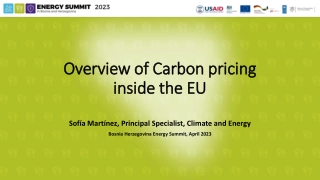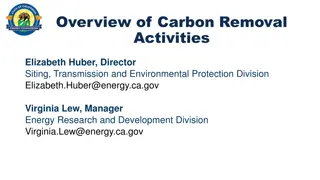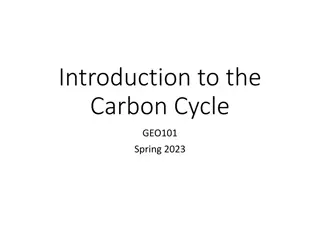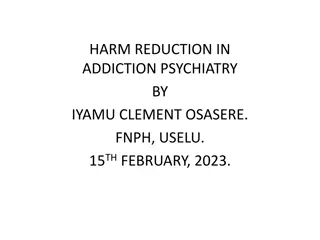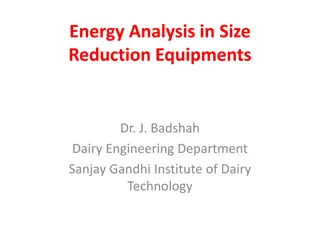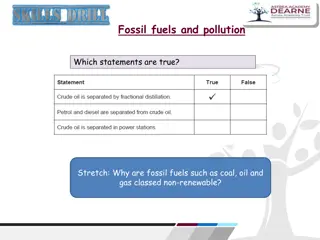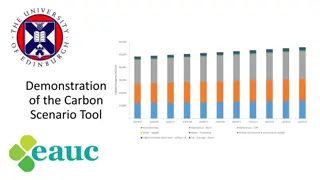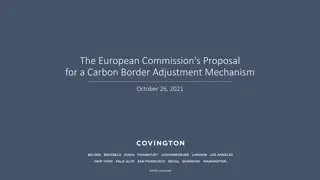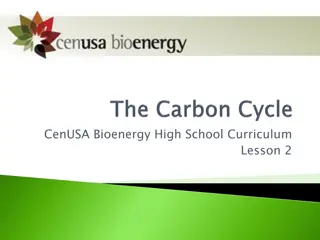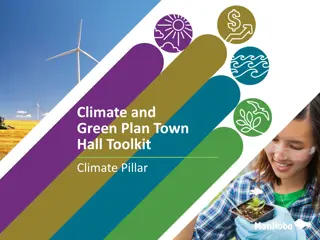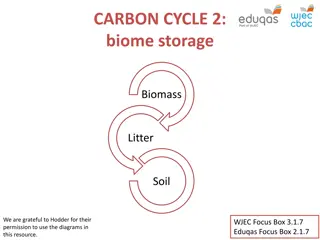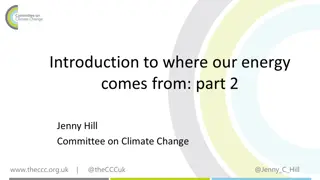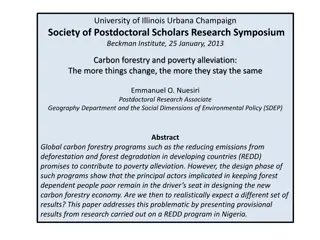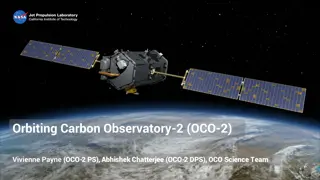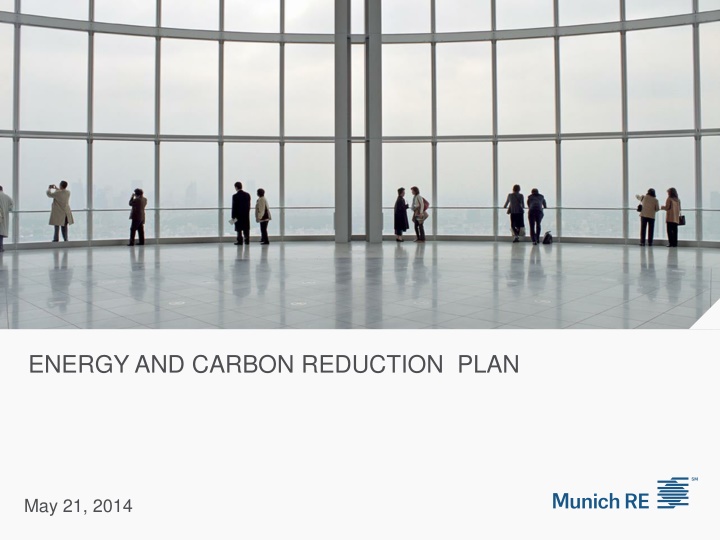
Energy and Carbon Reduction Plan Summary
The plan outlines steps taken in improving energy efficiency and reducing carbon footprint, involving initial site evaluations, program creation, research phase, and phase one improvements with upgrades to campus mechanical systems and lighting.
Download Presentation

Please find below an Image/Link to download the presentation.
The content on the website is provided AS IS for your information and personal use only. It may not be sold, licensed, or shared on other websites without obtaining consent from the author. If you encounter any issues during the download, it is possible that the publisher has removed the file from their server.
You are allowed to download the files provided on this website for personal or commercial use, subject to the condition that they are used lawfully. All files are the property of their respective owners.
The content on the website is provided AS IS for your information and personal use only. It may not be sold, licensed, or shared on other websites without obtaining consent from the author.
E N D
Presentation Transcript
ENERGY AND CARBON REDUCTION PLAN May 21, 2014
Initial Site Evaluation Initial site energy benchmark was performed in 2006 using the US Department of Energy s benchmarking software . Our Campus buildings initial scores for the four Plazas were: 23, 15, 01, and 01. Original MRAm Energy Benchmark Scores (Possible score = 1 to 100. Minimum energy efficient score = 75) 80 70 60 50 40 30 20 10 0 Minimum Rating for Energy Star Plaza I Plaza II Plaza III Plaza IV
First steps Based on the low energy scores, the buildings underwent a more thorough evaluation to determine which areas needed to be addressed. The initial energy study showed very high annual electrical usage (15,899,568 kWh/year) and water consumption (11,276,589 gallons/year). The campus mechanical infrastructure was found to be mostly working as designed, but the systems had been installed prior to the Energy Policy Act of 1992 and were not designed to be energy efficient.
Program Creation About the same time, in early 2007, Munich RE announced its plan to move towards Carbon Neutrality by 2012. The Munich Re Energy Reduction Plan was created over a 12-month period starting in 2007 and based on metrics and guidelines established in: the US Energy Policy Act of 2005 the LEED for Existing Buildings: Operations and Maintenance Rating System (version for USGBC member ballot in October 2007) the 2006 International Energy Conservation Code the ASHRAE Standard 90.1-2004 (The plan was revised where possible to ASHRAE Standard 90.2-2007.)
The Research Phase In the research phase of the Plan, the Corporate Facilities team: Identified projects through peers, vendor inquiries, classes and product expositions. Compiled more detailed "building-energy" models using ten years of utility bills to create average usage and baselines for systems. Used initial in-house calculations and models for budgeting consideration and used professionally engineered models to validate projects and savings.
PHASE ONE of the Program Improvements In 2007, Munich Re introduced the first phase of its Energy use and Carbon Reduction Plan. Campus mechanical systems were upgraded to improve environmental and economic performance. This phase of the Plan included: Kilowatt Hours 16,000,000 14,000,000 12,000,000 the installation of ABB VFD s throughout the campus (1,011598 kWh/year) 10,000,000 Installation of Watt Stopper occupancy controls at Workstations (132,740 kWh/year) 8,000,000 the installation of the Automated Logic WebCTRL system. Building Automation System (3,500,000 kWh/year) 6,000,000 4,000,000 the replacement of the two P2 150-ton chillers (93,400 kWh/year) Lighting upgrades replacing T8 light fixtures with T5 (1,800,000 kWh/year) 2,000,000 - The installation of a centrally automated IP based lighting controls system (1,300,000 kWh/year) By the end of 2012 the campus annual energy usage fell to 8,053,768 kWh (a reduction of almost 50% from 2007).
Other CO2 Savings Recycling 80% 70% RECYCLING: In addition to the improved energy efficiency, the campus increased its recycling of plastic, paper, cardboard, commingles, carpet, organic waste, construction waste, and hazardous wastes. Campus recycling has improved from less than 30% to over 70%. 60% 50% 40% 30% 20% 10% 0% 2007 2008 2009 2010 2011 2012 2013 Annual Campus Water Totals 12,000,000 WATER EFFICIENCY: The campus also improved irrigation controls and upgraded to waterless urinals, 1.28 g.p.f. toilets, touch-less faucets, and improved cooling tower chemical controls. These improvements reduced water usage by 31% (to 7,854,030 gallons per year) 10,000,000 8,000,000 6,000,000 4,000,000 2,000,000 0 . 2007 2008 2009 2010 2011 2012 2013
Performance Measures The combined effect of these improvements was a dramatic decrease in the campus Carbon Footprint. Munich Re had requested each entity reduce its Carbon Footprint by 12% by 2012. Because of the attractive ROI of many of the efficiency projects, Munich Re Princeton was able to reduce its foot print by 65% off its 2007 number (55% below the 2009 baseline year established). Total CO (kgs) 18,000,000 16,058,989 16,000,000 14,835,786 14,000,000 12,340,383 12,000,000 10,000,000 9,918,299 8,000,000 7012081 6551529 6,000,000 5551529 4,000,000 2,000,000 0 2007 2008 2009 2010 2011 2012 2013 (est)
Awards and recognition The campus improvements and sustainability program were recognized by numerous national and international industry organizations. On September 25, 2012, the 4 buildings on the Princeton campus earned the BOMA 360 Performance Building designation (presented by Building Owners & Managers Association International. Designation is awarded to properties managed to the BOMA s highest standards of excellence). Only 10 buildings in the state of New Jersey have earned this designation. Also in 2012, the company successfully completed the BOMA 7 Point Challenge (an encompassing energy reduction program challenging members of Building Owners & Managers Association International to decrease energy consumption by a minimum of 30 percent across company portfolios by 2012). Munich Re received special recognition for the greatest reduction on a percentage basis in the program.
PHASE TWO of the Program Improvements In August 2012, Munich Re completed the second phase of its Energy and Carbon Reduction Plan. The company completed construction on a 2.47 mW solar canopy system over the Plazas I and II parking lots, supplying the campus with: Approximately 3,122,077 kWh of zero carbon energy annually. Over 100,000 cubic feet of storm water recharge chambers installed below the parking lots to reduce the storm water runoff on campus. A significantly reduced Heat Island effect in the large parking lots on campus.
Site Re-evaluation The buildings initial benchmarks using the EPA Portfolio Manager had scores of: 23 (Plaza I), 15 (Plaza II), 01 (Plaza III), and 01 (Plaza IV). 100 90 80 In 2013, the buildings were re-evaluated. Scores improved dramatically to: 75 (Plaza I), 92 (Plaza II), 60 (Plaza III), and 46 (Plaza IV). 70 60 50 In addition, Plaza s III and IV are undergoing further improvements to ensure the company achieves a campus wide Energy Star certification. 40 30 20 10 0 Energy Star bldg Plaza I Plaza II Plaza III Plaza IV
The Next Steps Munich Re is currently: Replacing 57 inefficient transformers on site (est. energy savings: 402,153 kWh/year). Replacing Plaza 1 Cooling plant (est. energy savings: 200,000 kWh/year). Preparing to install upgraded Bicycle Racks and electric car charging stations on campus to promote zero emission commuting. Adding Natural gas pre-heating to the campus to decrease the use of Indirect energy in favor of the more efficient direct energy heating source. (est. energy savings to be provided as part of engineering of project).
The Next Steps In addition, the company has started working towards submitting for campus wide LEED certification. LEED, or Leadership in Energy & Environmental Design, is a certification program created by the US Green Building Council that provides third- party verification of sustainability and efficiency programs in buildings. Plaza 2 is currently in final LEED review with the expectation of receiving Silver certification in 2014. Plaza 3 is on target for a 2Q submission with the expectation of LEED Gold certification. The entire campus is expected to qualify for at least LEED Silver certification by 2015.
2015 Targets (Energy Costs) The Munich Re Energy and Carbon Reduction Plan has used the savings created by its initial phases to help fund the continuation and improvement of the Plan. Savings created by initial projects and phases currently in planning are on target to reduce annual energy costs by $1,300,000. Total Energy $ $2,500,000.00 $2,000,000.00 $1,500,000.00 $1,000,000.00 $500,000.00 $- 2007 2008 2009 2010 2011 2012 2013 est 2014 est 2015 est
2015 Targets (Energy Use and Energy Star Ratings) The upcoming MRAm Energy and Carbon Reduction Plan projects are expected to continue the energy use reduction and energy ratings improvement on campus through 2015 . Energy Star Score (Campus) Campus Energy Use (kWh s) 90 18,000,000.00 80 16,000,000.00 70 14,000,000.00 12,000,000.00 60 10,000,000.00 50 8,000,000.00 40 6,000,000.00 30 4,000,000.00 20 2,000,000.00 10 - 0 2007 2008 2009 2010 2011 2012 2013 2014 2015 2007 2008 2009 2010 2011 2012 2013 2014 2015


